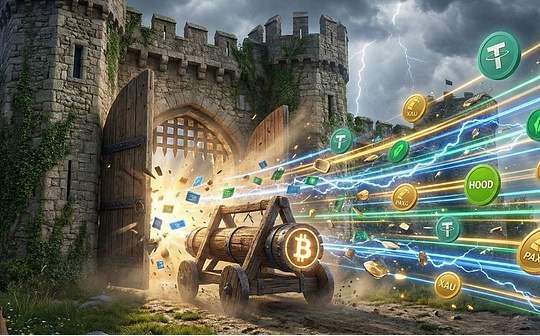
Author: Matthew Kimmell, CoinDesk; Compilation: Wuzhu, Bitchain Vision
Over the years, Ethereum’s ability to carry various applications and assets has become obvious, but its investment cases for native token ETH have become increasingly complex.With changes in key protocols, especially the activation of hard forks of EIP-1559 and EIP-4844, investors began to think about how Ethereum adoption would translate into the long-term value of ETH.
While the platform has expanded, the relationship between its growth and ETH supply and demand (and its price) is no longer as simple as it used to be.
EIP-1559 Revolution: Linking utility to token value
When Ethereum implements EIP-1559 in 2021, it introduced a destruction mechanism where the vast majority of transaction fees (basic fees) will be permanently removed from circulation.This establishes a direct relationship between the use of Ethereum and the provision of ETH.As users pay transaction fees on the Ethereum network, destruction will act as a deflationary force, reducing the supply of ETH and exerting pressure on its price.
In 2023, our valuation model at CoinShares shows that under the appropriate conditions, Ethereum generates $10 billion in L1 transaction fees each year, which is its peak in 2021, and the value of ETH may reach nearly by 2028.$8,000.
Since then, however, optimism has faded due to the Dencun hard fork and the rise of Layer-2 (L2), which has subverted the cost destruction and changed the value potential of ETH.
The Rise of Layer 2: A Double-edged Sword
The L2 platform aims to scale Ethereum by moving transactions from the main chain (L1) to a faster and cheaper network.Initially, L2 was a complement to L1, helping the network handle more transactions without clogging the underlying chain – like a pressure relief valve, balanced at high usage.

But with the introduction of “blob space” in 2024, L2 can now settle transactions on L1 at much lower costs, reducing the requirement to pay expensive L1 fees.As more and more activities migrate to L2, the supply consumption that EIP-1559 aims to instillate begins to decline, weakening downward pressure on ETH supply.
The reality that Ethereum generates high L1 fees to support ETH value looks dim now.The steady decline in L1 transaction fees has raised questions about how different services are provided at all levels and what will drive the L1 fee landscape forward.
The way forward: Restoring destruction or adapting to new reality
Despite these challenges,There are potential ways to restore demand for L1 trading and, in turn, restore ETH valuation.
One option is to develop high-value use cases that rely on L1 security and reliability, but given the current trend, this seems unlikely to happen in the near future.Another possibility is that adoption of L2 is growing so quickly that the absolute number of transactions can compensate for the discounted fees – but this requires extraordinary L2 growth beyond recent expectations.
The most likely, and perhaps the most controversial solution is to reprice the blob space to increase the L2 settlement fee.While this will restore some of the L1 supply destruction, it may disrupt the economy of L2, which is key to Ethereum’s recent success and enhances its competition as an ecosystem against other platforms (such as Solana, Binance Chain, etc.)ability.
The uncertain future of ETH
While L2 has expanded Ethereum, they also disrupt the mechanisms that link the value of ETH to its utility.For investors, this meansThe future of ETH depends on how Ethereum balances innovation with maintaining healthy economic policies.
Currently, ETH’s investment case is disturbing, and the risks remain high as the Ethereum community decides its path forward.








